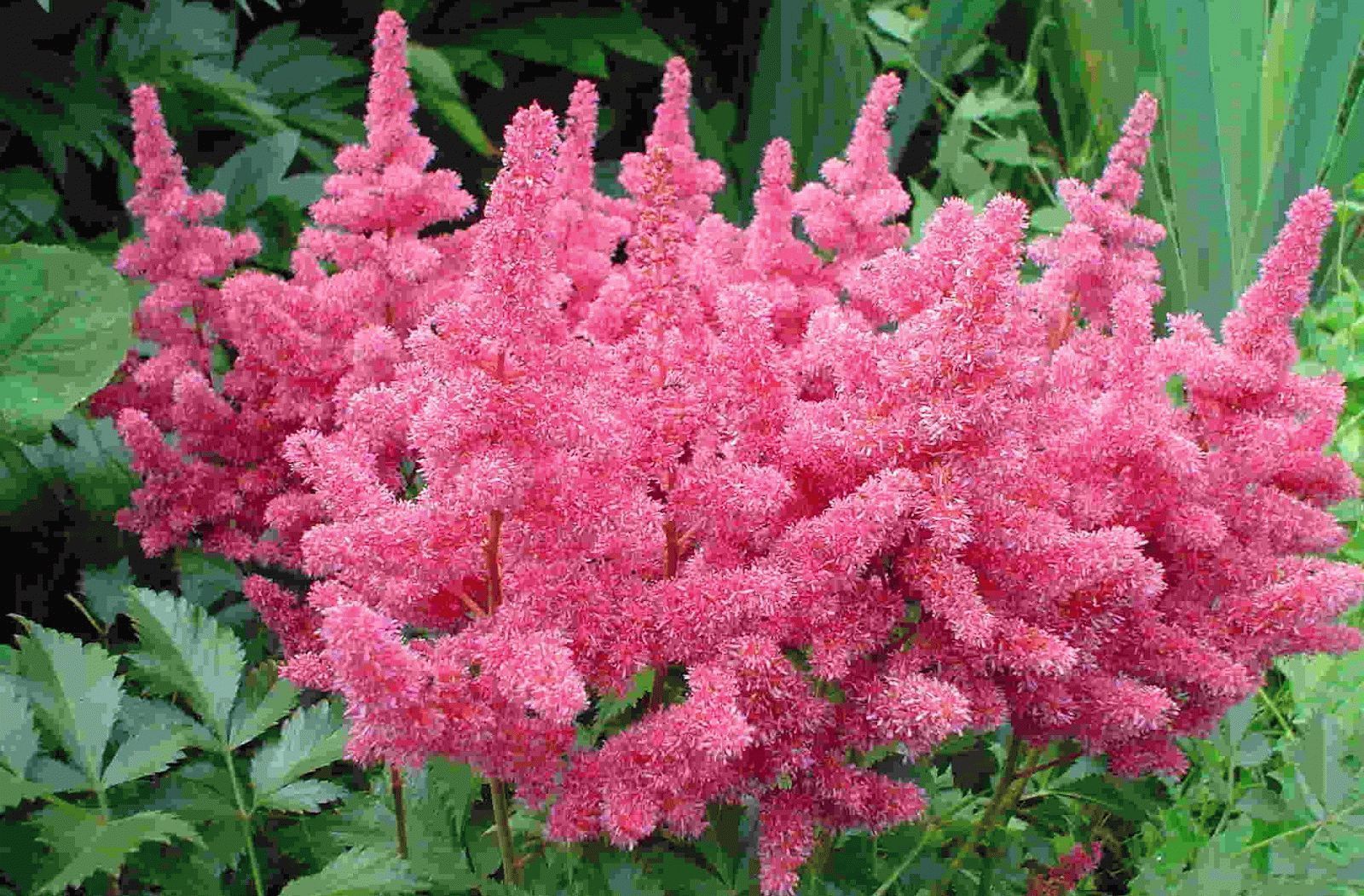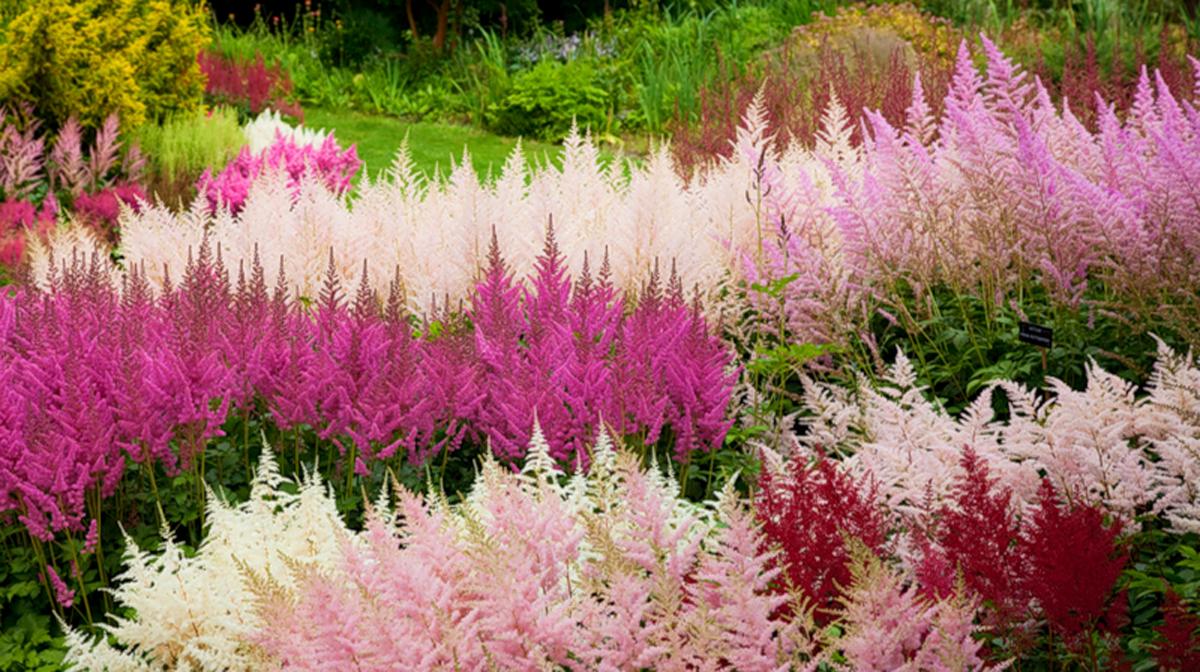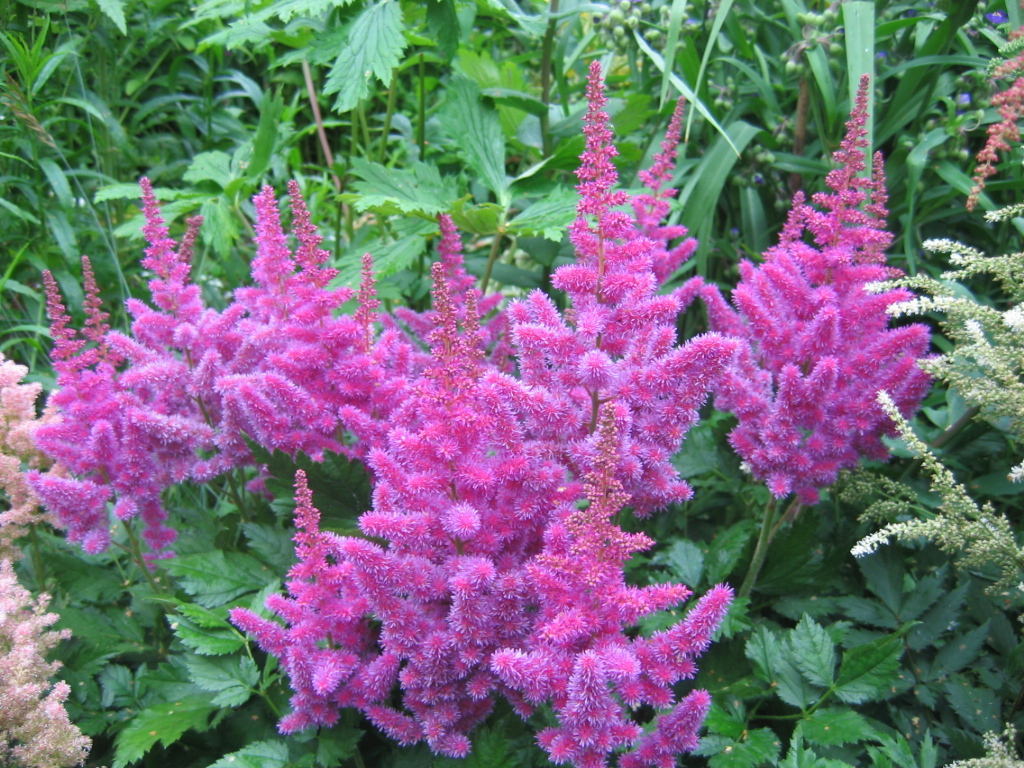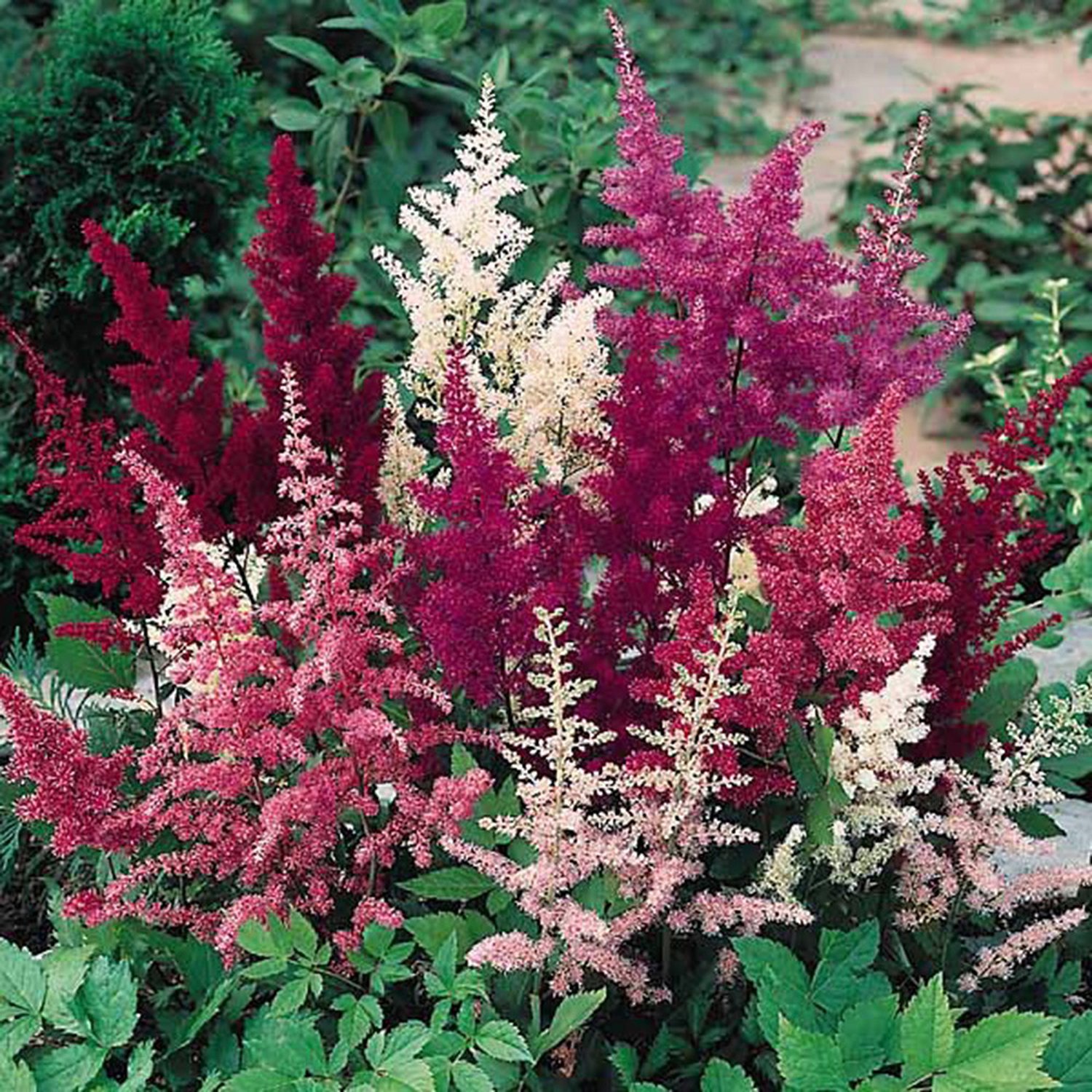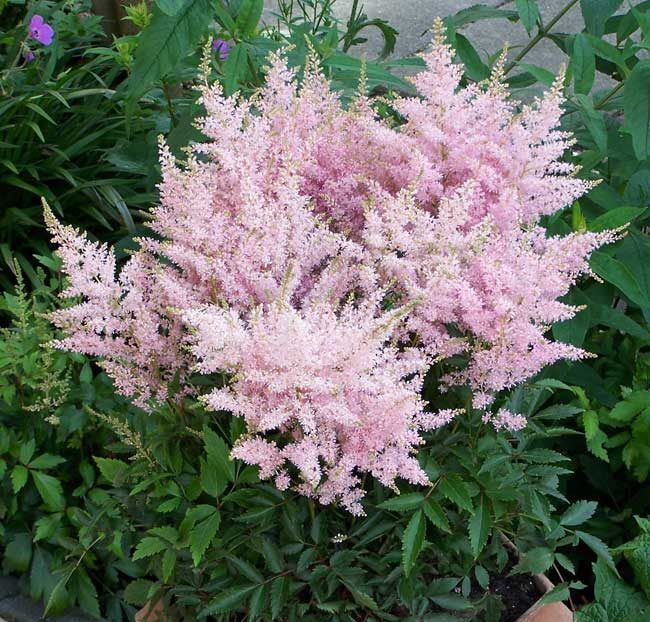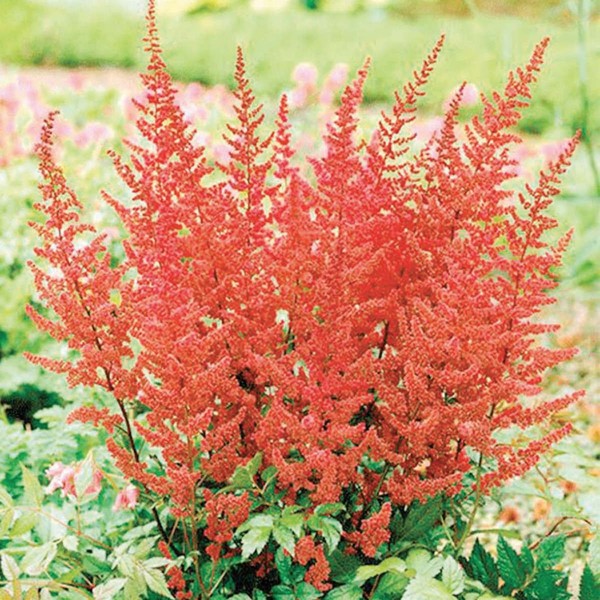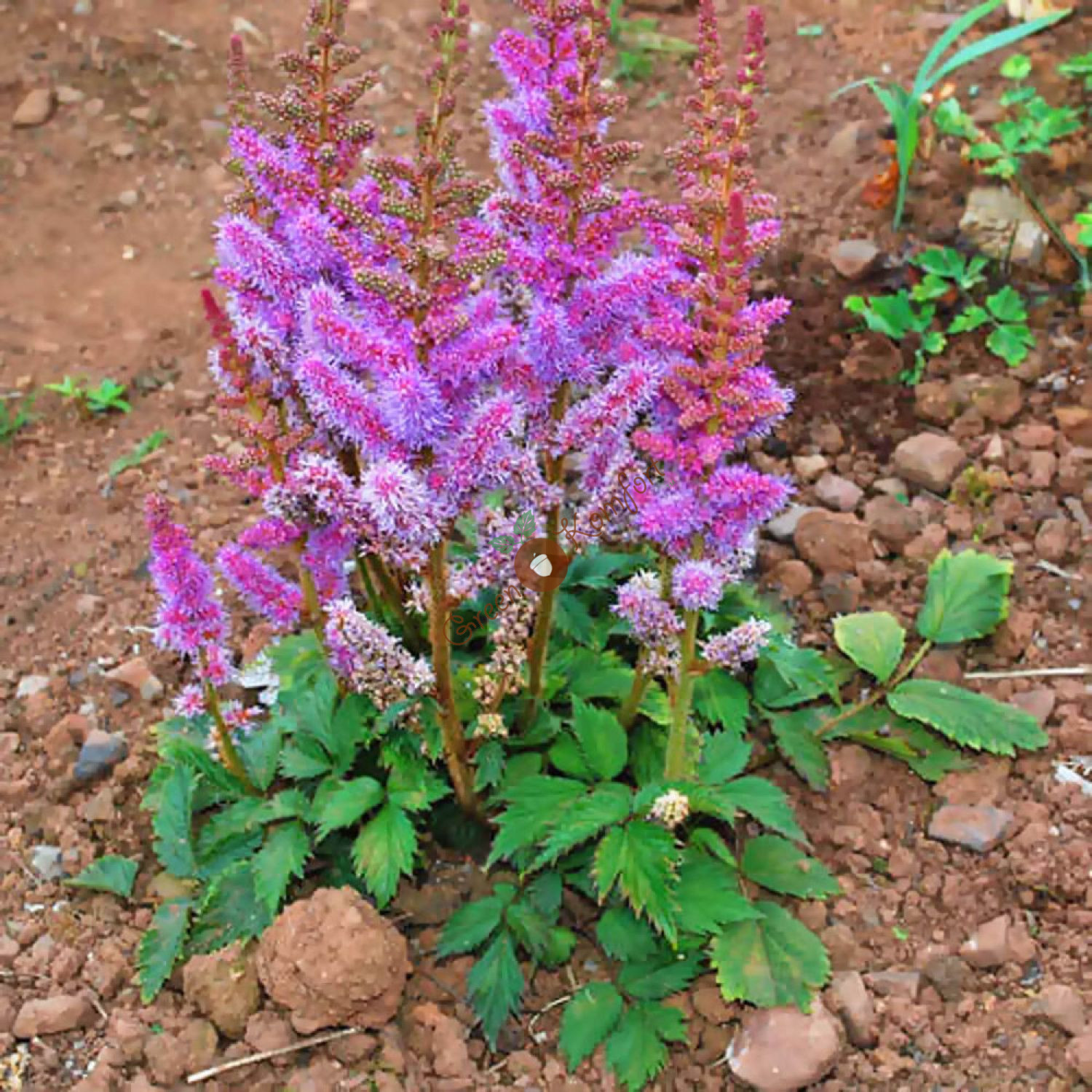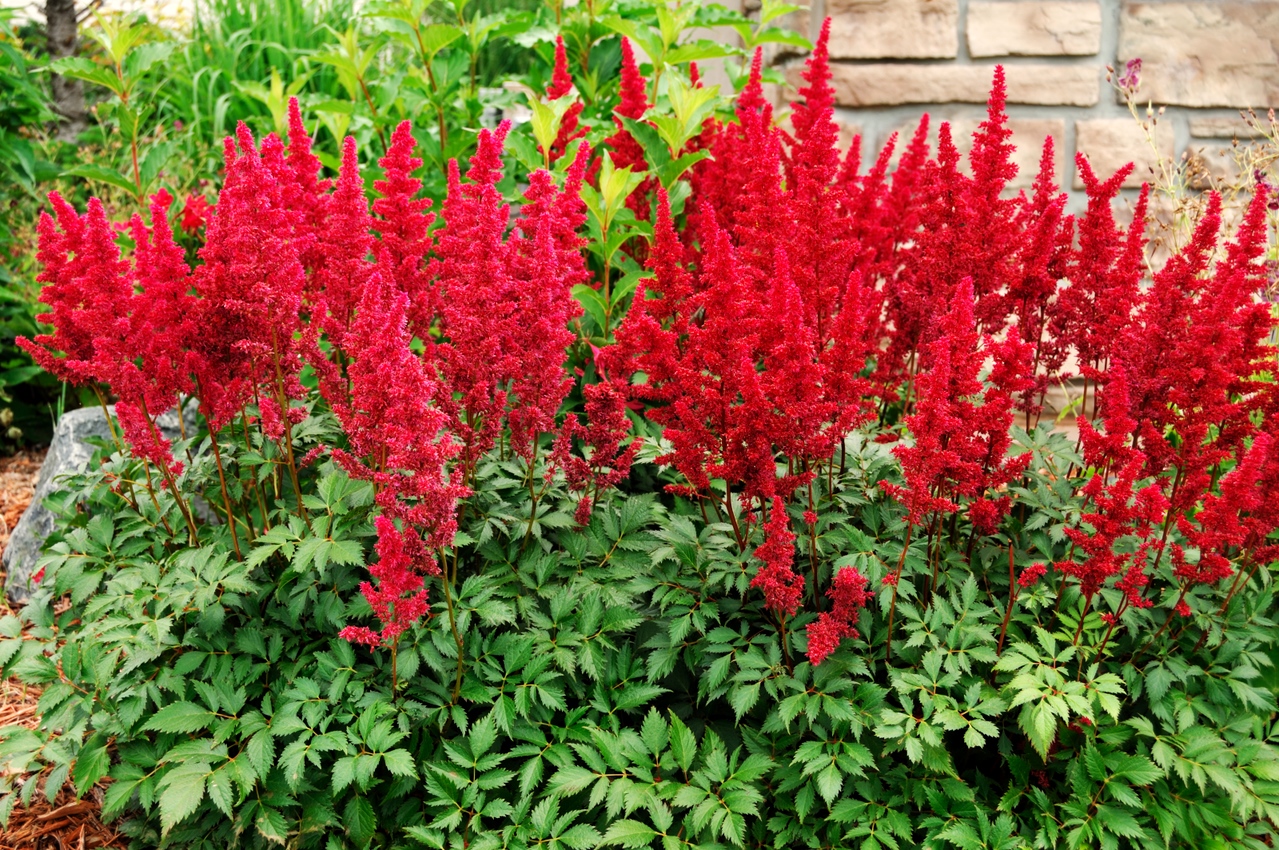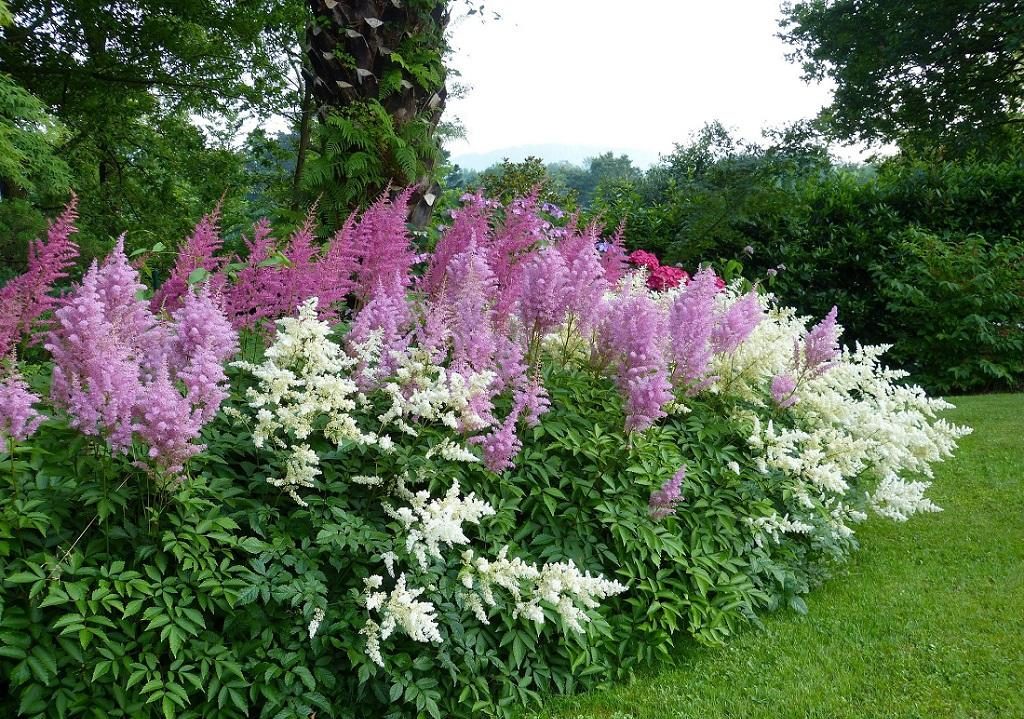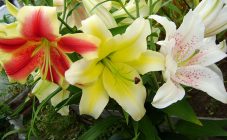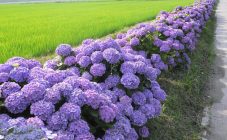Content:
Astilba is one of the most decorative perennials. These plants are often used in landscaping. They are planted in mixborders, in flower beds, rabatkas. There are a huge number of astilba varieties that differ in size, shape and color.
About culture
Astilbe - perennial ornamental shrubs from the saxifrage family. Stem (30-150 cm high) straight, strongly leafy. The bush is dense.
This is a rhizome culture. In winter, its aboveground part dies off.
The plant usually blooms in the second half of summer. Small flowers of different colors:
- snow-white;
- purple;
- burgundy;
- purple;
- lilac, etc.
In accordance with the flowering time, the culture can be early (June), medium (July), late (August - early September).
Astilba: types and description
More than 300 species of astilbe are known. According to the type of inflorescences, they are divided into pyramidal, rhombic, paniculate and drooping.
There are many options for classifying the species of this plant. They are divided by size, shape, color, origin. Below are the most common ones.
Hybrid
Astilba hybrid is divided into 5 groups:
- Arends' hybrids are optimal for group plantings. They have been used in ornamental gardening for over 80 years. The average plant height is 1 m. The bushes are spreading. Astilbe colors are white, pink, burgundy, purple or red.
- Lemoine hybrids - the group includes the oldest varieties. There are few of them - only about 20.
- Thunberg hybrids - up to 80 cm in height with flowing inflorescences.
- Japanese hybrids are compact plants, ideal for group plantings.
- Chinese hybrids - G. Arends participated in the selection of the first varieties. Flowers form rhombic inflorescences up to 30 cm tall.
Most varieties grow even in swampy soil, but cannot tolerate drought.
Burgundy
Astilba burgundy includes the varieties presented in the table:
| Inflorescence shape | Name |
|---|---|
| Paniculata | Anita Pfeiffer, Bonn, Dunkhellas, Gertrude Brix, Garnet, Intermezzo, Perkeo, Spinell |
| Rhombic | Aphrodite, Bressingham Beauty, Bremen, Dusseldorf, Federsee, Gloria, Mongomery |
White
The varieties of white astilba are shown in the table:
| Inflorescence shape | Names |
|---|---|
| Pyramidal | Bronzlaub, Mont Blanc |
| Rhombic | Weiss Gloria, Washington, White Queen |
| Paniculata | Bergkristall, Deutschland, Diamant, Gladstone, Irrlicht, Kening Albert, Plume Neijo |
| Drooping | Avalanche, Herb de Neige, Professor Van der Wilen, Walcuret |
Purple
Varieties of purple astilba are presented in the table:
| Inflorescence shape | Name |
|---|---|
| Paniculata | Amethyst, Federze, Final, Hildegard, Kwele |
| Drooping | Rubella |
| Rhombic | Cattleya, Gloria Purpurea, Rubens |
Red
Among the varieties of red astilba, the most popular are those with paniculate inflorescences:
- Vision in Red;
- Etna;
- Fanal;
- Fuer;
- Glut;
- Koblenz;
- Liesma;
- Mainz;
- Red Sentinel;
- Vesuvius.
Single blotches of red flowers look especially elegant among ornamental coniferous shrubs. Landscape designers especially appreciate the Montgomery terry variety with burgundy flowers.
Lilac
Varieties with lilac color of flowers:
- America;
- Ceres;
- Hyacinth;
- Opal;
- Siegfried.
The shape of the inflorescence is paniculate.
Raspberry
Raspberry-colored varieties are presented in the table:
| Inflorescence shape | Name |
|---|---|
| Paniculata | Brunhilde, Erika, Kriemhilda, Peach Blossom, Rose Pearl, Sprite, Weiss Pearl |
| Rhombic | Europe, Marie van Stirum |
| Pyramidal | Rhineland, Serenade |
| Drooping | Betsy Caperus, Elegance Rose, Mozrheimy, Queen Alexandra, Strausenfeder |
Blue and blue astilbe
Not all shades of flowers of this plant are widespread. Blue and blue astilbe are rare representatives of the Chinese species. The seeds can be bought in specialized florist shops or ordered online.
Mix
Astilba mix consists of numerous colors of various colors:
- white;
- raspberry;
- lilac;
- burgundy;
- purple.
Flowering duration is 25-30 days. These "kits" are often sold in flower shops.
High
The group of tall astilbe includes plants above 90 cm. In particular, the view of David has been known since the beginning of the twentieth century. It grows up to 1.5 m. Sprawling bush, lilac flowers. Inflorescences are pyramidal, 25-40 cm long. Duration of flowering is 10-14 days.
Undersized
The height of the undersized astilbe is from 30 to 60 cm. Not many items are included in this group. The most famous are Arends varieties:
- The final;
- Intermezzo;
- Serenade;
- Rose Pearl;
- Veronica Close;
- Catley;
- Spatsommer.
All of them have one difference - flowering occurs at the end of summer, so they are of particular interest to landscape designers. Also, these varieties can be used to decorate rock gardens.
Dwarf
The dwarf group includes the Japanese astilba Perkeo. Its height is only 20 cm. It is distinguished by the original form of leaves with fringed edges. Flowers - pink, purple or similar shades.
Dwarf plants are great for creating curbs. They are planted quite tightly - every 25-35 cm. Also, with their help, you can arrange rockery in an original way.
Miniature
Another successful result of the work of breeders is the miniature astilba Lilliput. She looks elegant and harmonious. Height - 10 cm, with peduncles - 25 cm.Coloring options:
- salmon;
- lilac;
- creamy.
This plant develops slowly. It does not need to be planted often, so it will not cause trouble for the grower.
Mini
Mini-astilbe reaches a maximum of 30 cm.This variety includes Arends varieties:
- Fanal;
- Diamonds and pearls;
- Brautschleier.
In addition, Japanese Elizabeth Van Win astilba is popular.
These varieties have different colors. They will take root well in a dark corner of the garden where other flowers do not develop.
Groundcover
This group includes the undersized subspecies (30-35 cm) of Chinese astilba - Pumila. The plant is creeping, quickly spreads over the site - in 2 years it takes 1 m². The flowers are beautiful, pale pink. Panicles grow up to 18 cm in height. The flowering of ground cover astilba continues until late autumn.
Simple-leaved
It grows up to 50 cm. The inflorescences are bright, drooping. Common-leaved Astilbe makes the highest demands on growing conditions. Its representatives do not tolerate heat and lack of moisture. Most popular varieties:
- Bronze Elegance - pink with a golden sheen;
- Straussenfeeder - coral;
- Preacox Alba is snow-white.
Decorative
Decorative astilbe has only 12 types. But many hybrids were created on their basis. The range of plants continues to grow to this day. This is a great option for decorating a summer cottage. Plants are unpretentious and do not require specific care.
Wild
Distributed in the Far East and North America. It grows in forests and other places where high humidity remains even in the heat. For example, on the banks of water bodies. About 30 species of wild astilbe are known.
Features of planting and care
Astilba is shade-tolerant and frost-resistant. A shaded place is assigned for her - direct sunlight is contraindicated for her. In winters with little snow, it can freeze a little. The greatest danger is posed by recurrent frosts - they damage young foliage.
The plant is quite unpretentious. Prefers loose loamy soil with moderate moisture.
During the growing season, the soil is mulched with chips, bark or peat to prevent rapid evaporation of moisture.
Astilba is rarely propagated by seeds, because in this case varietal qualities are not preserved. Basic ways:
- Division of the bush - carried out in early spring or autumn. From one old plant, 2-4 new ones are obtained.
- Kidney division - in the spring, the renewal buds are cut and rooted in the greenhouse. This method shows excellent results.
In the first winter, young seedlings are best covered.
Cultivation techniques, diseases and pests
Taking care of astilba is easy. It is necessary in a timely manner:
- loosen the soil;
- carry out mulching;
- to water.
The last point is especially important. The main condition is to maintain optimal humidity. The soil should not be allowed to dry out, but there should be no stagnation of water.
For abundant and long-lasting flowering, organic fertilizers are applied.
The plant is resistant to pests and diseases. In rare cases, it is affected by:
- slobbering pennies;
- strawberry or rootworm nematodes.
Astilba has gained popularity due to its long flowering, variety of species and resistance to adverse conditions. It is used in single and group plantings, curbs, grown for cutting. This is a great addition to delicate romantic bouquets.
